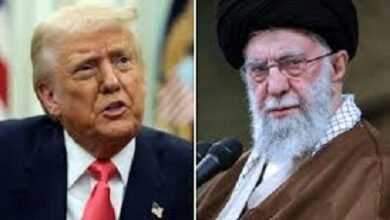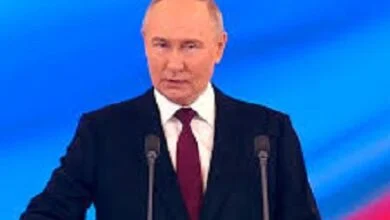The Gaza ceasefire deal the U.S. has tabled represents the best !!!
By: S K Singh Editor-in-Chief

WAR-REPORT:– Efforts by Egyptian, Qatari and U.S. mediators to reach a ceasefire between Israel and Hamas have reached a decisive juncture. The proposal on the table comes closer than its predecessors to getting past the main sticking point regarding a permanent ceasefire, which Hamas demands and to which Israel refuses to commit. It envisages an immediate truce and partial hostage/prisoner exchange, with talks to follow on Gaza’s governance and security.

Though the deal on offer fully satisfies neither side, no better one is likely to emerge any time soon that can both end the fighting that has devastated Gaza and secure the release of Israeli hostages held in the strip. Moreover, the longer the war continues, the graver the risk that tensions on the Israel-Lebanon border, or between the U.S. and Iran-backed groups elsewhere, set off a regional escalation that could further draw in Washington and Tehran.

Israel and Hamas should embrace the deal on the table as a humanitarian imperative and because neither side can achieve strategic victory and each has long passed the point of diminishing returns. Continued war will neither destroy Hamas as Israel seeks nor strengthen Hamas’s hand, let alone improve prospects for Palestinians. It guarantees only greater suffering to a people who desperately need relief.
Full details of the deal on offer have yet to become public, but the rough outlines have been widely reported. They follow the model in the mediators’ previous proposal in early May, a draft of which Hamas accepted, albeit with caveats, and which Israeli Prime Minister Benjamin Netanyahu’s government then rejected.

The new version, which U.S. President Joe Biden announced in a White House speech on 31 May, appears to leave key elements in place: a ceasefire in three phases, with each consisting of steps that together would end the war.
In the first phase, of six weeks’ duration, Israel would withdraw its forces from all “populated areas” of Gaza. Hamas would release Israeli civilian, elderly and wounded hostages, as well as the remains of some deceased hostages, in exchange for Israel freeing an agreed-upon list of hundreds of Palestinian prisoners from Israeli jails. Israel would also allow displaced Palestinian civilians to return to their homes including in Gaza’s north and allow the entry and distribution of more goods and fuel into the strip.

The transition from phase one to two would follow talks between Israel and Hamas. Critically, the proposal states that the ceasefire is to hold as long as the parties continue their negotiations even if these extend beyond the allotted six weeks.
The deal’s second phase would see the release of all remaining hostages, including soldiers, and the full withdrawal of Israeli forces from Gaza. At that point, the phase one ceasefire would turn into a permanent cessation of hostilities. In the third phase, Hamas would hand over the remains of the last of the deceased hostages. The import regime also would be relaxed, with








